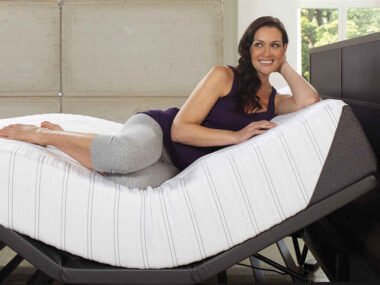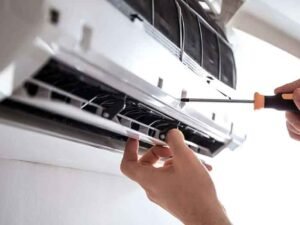Have you ever watched a weather alert on your phone and suddenly realized your flashlight is dead, the batteries in your radio are missing, and you’re not entirely sure where the matches went? For most people, disaster prep is one of those things we mean to do. Right after the laundry. Or before the holidays. And yet, when the sky turns gray, even everyday homes in quieter places like Madison, WI, can feel unexpectedly fragile.
While no one wants to live in constant fear of the next power outage or storm surge, more families are starting to treat preparedness as a way of life rather than a last-minute scramble. Wildfires in the West, flooding in the East, and extreme temperatures just about everywhere have made it clear that resilience isn’t just for bunkers. It starts with everyday decisions about the way we build, maintain, and think about our homes.
In this blog, we will share what your home can borrow from disaster prep culture to become stronger, safer, and more future-ready—without becoming a fortress.
Resilience Starts at the Top
One of the easiest ways to boost home readiness is also one of the most overlooked. Your roof does more than keep you dry. It’s the first line of defense against wind, rain, and snow. A well-built, well-maintained roof protects your structure, cuts down on energy loss, and prevents water damage from becoming a silent problem.
Finding a reputable professional matters. That’s why working with a trusted roofing company in Madison WI is a smart move for anyone who wants to future-proof their home. Whether it’s inspecting after a harsh winter or replacing worn shingles before summer storms, proactive care is cheaper—and far less stressful—than emergency repairs.
And while it’s tempting to postpone roof work until “next season,” keep in mind that bad timing can cost more than money. In an age where climate patterns are changing fast, being prepared ahead of time isn’t paranoid. It’s practical.
Storage Isn’t Just for Stuff
If your pantry is full of expired canned soup and a box of rice from 2017, you’re not alone. For years, prepping had a certain doomsday vibe. But today, it’s about something more grounded: reducing risk and planning for interruptions.
Modern preparedness looks more like smart stocking. Think backup supplies that are part of your life, not just for emergencies. Having shelf-stable food, clean water, and some basic first-aid supplies isn’t extreme—it’s responsible. Especially if your area is prone to power outages or snow-ins.
And the benefits aren’t just for disasters. Stocking up can also mean fewer grocery runs, less panic-buying during shortages, and a buffer during sick days or unexpected job changes. Preparedness isn’t about living in fear. It’s about building options into your life.
Power to the People (and Their Generators)
When power outages used to last a few hours, most people would light some candles and wait it out. Now, rolling blackouts, grid failures, and extended outages are more common in parts of the country that never expected them. That has led to a growing interest in generators, solar panels, and battery backups—not just for convenience, but for independence.
Portable generators are good for short-term fixes. But if you want your fridge, medical devices, or work-from-home setup to stay running, whole-home solutions are worth exploring. Some families even pair solar panels with battery storage to create energy redundancy, reduce bills, and avoid scrambling when the grid goes down.
There’s also growing interest in microgrids and local energy-sharing systems. These community-level strategies aren’t just good for emergencies. They help reduce reliance on aging power infrastructure while keeping neighborhoods more self-sufficient.
Designing for Calm, Not Chaos
Disaster prep doesn’t have to be all sandbags and generators. It can also be about creating spaces that help people stay calm and connected during disruptions. More homes now feature flex rooms, dual-use furniture, and open layouts that can adapt as needs change.
Parents might turn part of a basement into a study area that also functions as a storm-safe room. Seniors might add safety features like motion lights or backup handrails to reduce fall risks during blackouts. Even the simple act of making sure flashlights are easy to find or setting up a communication plan with family can reduce stress during tough moments.
Design choices don’t just shape how a home looks. They influence how people feel when something goes wrong.
Insurance Is Not a Plan
It might be tempting to rely on insurance to solve problems, but it’s not a replacement for prevention. Claims can be denied. Payouts can be slow. And during large-scale disasters, even well-insured homeowners may wait weeks or months for repairs. That’s why investing upfront in safer, smarter home systems pays off more than most realize.
Storm shutters, sump pumps, smart detectors, and reinforced doors are all simple upgrades that reduce risk. And some insurance providers now offer discounts for homes that include these features. In a way, the best insurance is often a mix of readiness, awareness, and good decisions made long before a problem arises.
Lessons from Other Places
There’s a lot to learn from regions that deal with regular threats. Coastal towns are used to prepping for hurricanes. Mountain communities have fire drills baked into their culture. What stands out is not fear—but clarity.
These communities don’t wait for trouble to knock. They teach their kids evacuation plans. They know where the flashlights are. They run drills. It’s part of life. And that mindset is spreading.
As more families across the U.S. experience weather extremes, this kind of planning is becoming normalized. It’s no longer something “other people” do. It’s becoming part of what it means to be a responsible homeowner.
Preparedness Isn’t a Personality Type
You don’t have to be outdoorsy, anxious, or obsessed with weather apps to take preparation seriously. You just need to recognize that the world is shifting, and it’s better to shift with it than scramble after the fact.
Preparedness isn’t about predicting every possible outcome. It’s about building capacity into your home. Making space for food. Choosing durable materials. Asking better questions when hiring help. Planning ahead, not because something will go wrong—but because, if it does, your home can absorb the hit.
Storms may be unpredictable, but your readiness doesn’t have to be. With a little planning and the right choices, your home can do more than shelter you. It can support you, even in the moments that matter most.










